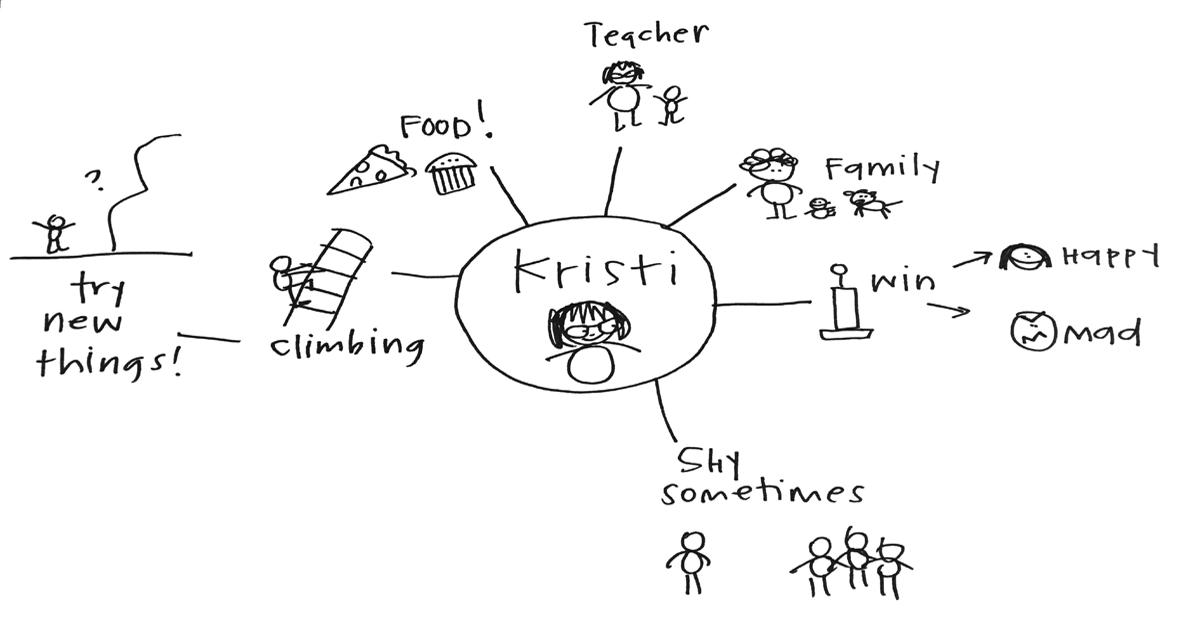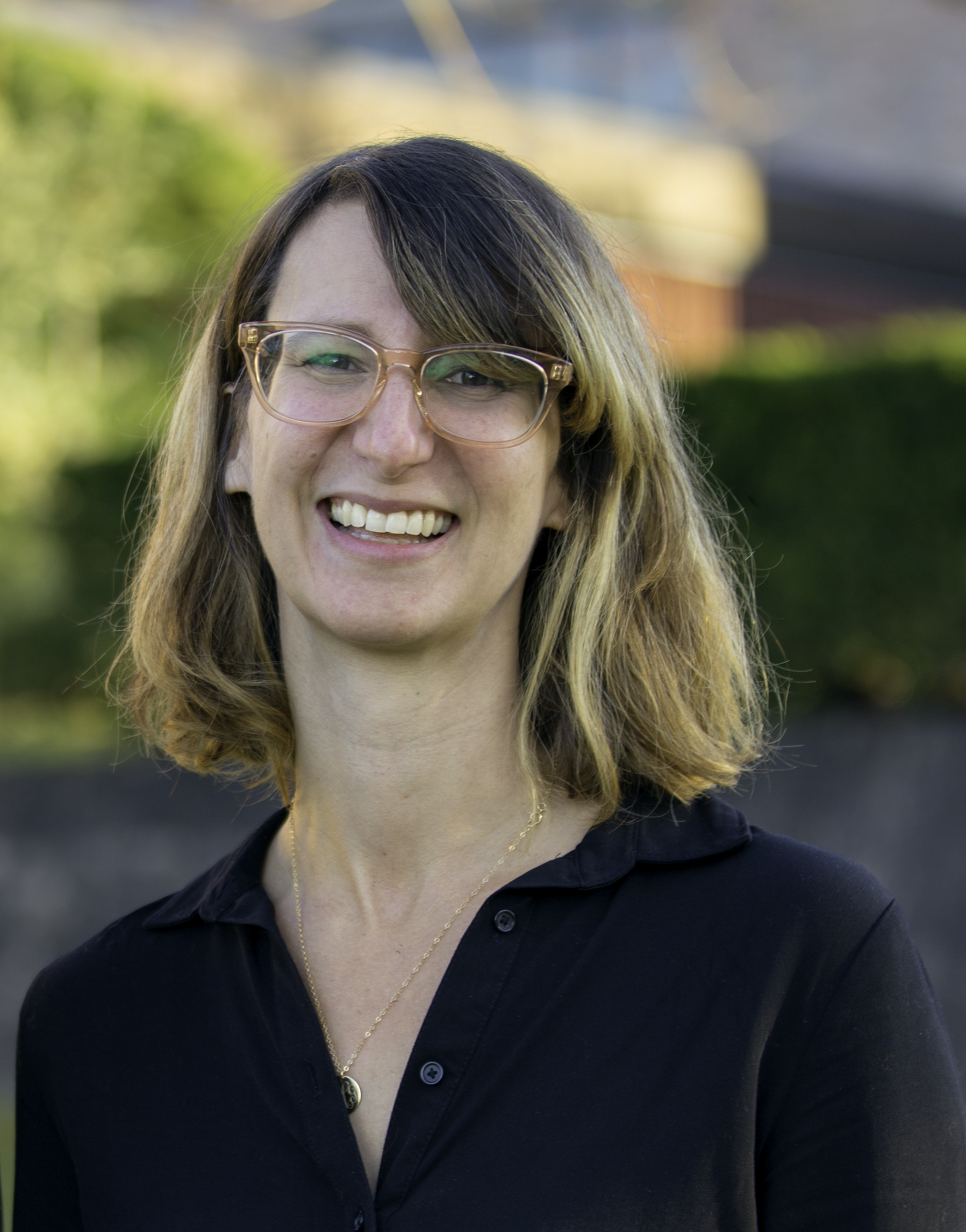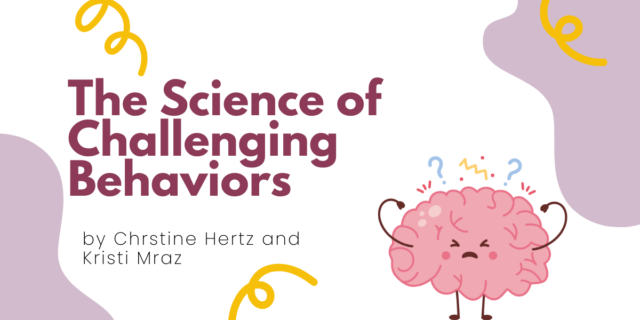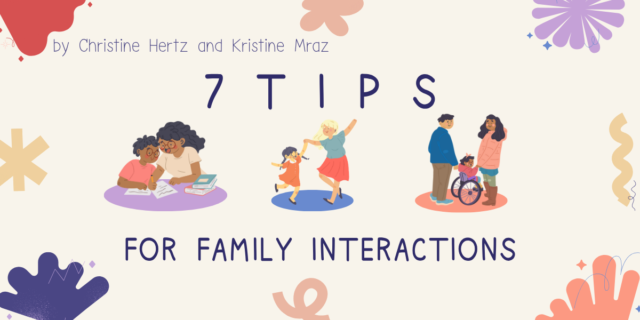
The following was written by Kristi Mraz, co-author of Kids First From Day One.
I teach kindergarten. Most of my day is filled with blocks and boogers and paints and pudgy fingers and inventive spellings that inadvertently spell curse words. My day is also filled with reading and writing and counting and joy. And also bias.
Bias, you may say? But they are just little children! They don’t know about things like racism and prejudice and class difference!
Or do they? Here is a snippet of things I have overheard over the past five years:
- When playing family at choice time: "Moms can't drive. Only Dads can drive."
- At recess: "You have to be Darth Vader because you have dark skin and so does Darth Vader."
- Seeing the black mom of a biracial student at pick-up: "Is that your nanny?"
- During lunch, to a child with curry: "Your food smells bad."
- To a child with a Mom from Mexico: "If they took your Mom away, would you stop them?"
- Seeing a child with short hair and a video game T-shirt: "You look like a boy."
Some of these statements were not intended to be harmful or hurtful, and some children are parroting back something they have heard without the belief system to generate and sustain that thought (at least not yet). But how we respond, or don’t, to any of these comments in our classrooms has a long-term impact on how children view difference. Anyone who works closely with young children can attest to the veracity of studies that find “three to five year-olds not only categorize people by race, but expressed bias based on race”. It is not a question of if these topics will enter our classroom, but a question of when and how. Often, we hear bits and pieces through children’s play, sometimes it is through conversations at snack and lunch, but this current is always there if we listen closely.
So, what do we do?
I went through an evolution of shushing (Don’t say that!) to denying (“That’s not true!”) to understanding that we need to have conversations if we are going to grow a compassionate empathetic society. But boy oh boy, did that seem scary.
Thank goodness for Sara (pronounced Sahr-ah) Ahmed’s new book, Being the Change.
First things first. Yes, it says grades 4-12 on the cover. But how often have you purchased a toy for your own child that has an age range your child has not yet reached? It’s a guideline and we will follow the same rule of thumb we do for those toys: use your best judgement, watch your kids, remove anything that feels like too much.
Having said that, there is so much we can use as primary teachers in this book it would be a shame for someone to turn away from it because they see that on the cover. So, let’s dive in, shall we?
What is Social Comprehension, and Do Little Kids Need it?
Sara defines social comprehension as developing “skills and habits to help us comprehend social issues and participate in relevant, transparent conversations.” She points out that this skill is learned, and to me, that means we need to be teaching it from the first day of school in kindergarten. It is more than just having the skills of conversation. Though that is certainly part of it, it is also normalizing difficult conversations and studying the impact of our actions on others so that we may learn better and do better. Little kids are more than capable of talking about big issues when we approach it in a way that feels appropriate and connected to their lives. It will be messy and clumsy at the start, but what isn’t? Sara provides lessons and trouble shooting and practical tips to get us going.
Walking the Walk Comes Before Talking the Talk
One of the most impactful messages Sara shares is that we, as teachers, need to do this work first. She says, “The more we are able to be introspective upfront, the more comfortable we may become with the discomfort of powerful discussions that can move all of us to new levels as learners, and critical thinkers, and to sometimes Herculean feats of humility.” (p xxvi) I grew up in a culture of saying, “We don’t see color.” Talking about race, in my learning, was to be racist. It wasn’t until I was much older that I realized to say you don’t see color is to render people and their experiences invisible. I needed to do some of my own learning first, so when these conversations began in the classroom, as they always do, I could lean in and not away. To move from shushing or denying to real and authentic conversation. As I read Sara’s book, the adult learner in me devoured the strategies and the lessons for my own personal growth. They say in parenting that the best predictor of who your child will be is who you are. Can’t we say the same about our classroom? It is our ethical responsibility to develop deep levels of social comprehension, so we can model and respond to children with that as our leading edge. Just sitting with the lessons in this book will make you feel more comfortable with the possibility of hard conversations in your primary classroom, and life. The first read (and yes, I read it multiple times already) was mostly about building my own social comprehension so that I was a better person for my littles.
Now Let’s Get to Talking the Talk
Having said that, there are lots of lessons that I pulled for my children. As I read each lesson, I asked myself a few questions:
- What is the big idea of this lesson?
- What are the steps of the lesson?
- What can stay the same?
- What can I adapt/modify?
- What should I leave out, or save for a later day?
One thing I want to throw out early on is that I did not suddenly create social comprehension time. You could of course, but as I read I saw links to many of the routines and habits we have in our early childhood classrooms: morning meeting, read aloud, even word study. Sara’s lesson about the Stories of Our Names immediately helped me put the phonics routine of Star Name in a different light. We spend so much time on names in early childhood, adding a lens of social comprehension (what the name means, what experiences we have with our names, what stories we might know about our name) felt electrifying and powerful. It felt like a way to make change.
In the sample, which I highly encourage you to go read, we get a close-up of the lesson on identity webs (starts on page 5, which is page 28 in the sample).
What is the big idea of this lesson?
Sara describes identity webs as “personalized graphic tools that helps us consider the many factors that shape who we are.” (pg 5) To my primary eye, this seems like a perfect lesson to use with my five-year-olds. Why? “All About Me” is already a part of our curriculum. We talk about ourselves and our passions constantly. The word identity is worth learning and worth knowing. A strong self-identity is an important part of growing up.
What are the steps of the lesson?
Sara suggests the following steps for her lesson with older kids:
- Ask children to think about the word identity. Students “write, pair, share” (Sara includes a tip for helping make sure everyone find a partner, and underscoring the work of inclusion in the classroom)
- Model an identity web during a read aloud
- Model the start of your own identity web (Sara suggests modeling what you know kids will connect to as well as being a little vulnerable, so kids feel comfortable being vulnerable too)
- Make space for kids ask questions and model respectful thoughtful language in your responses.
- Kids make their own identity webs
- Share
What can stay the same? What can I adapt and modify? What can I leave out or save for a later date?
- Ask children to think about the word identity. Students “write, pair, share” (Sara includes a tip for helping make sure everyone find a partner, and underscoring the work of inclusion in the classroom)
For this step, I first asked if anyone had heard the word identity. (No) Predicting that might happen, I then introduced a kid friendly definition I had hashed out with my colleagues. We had settled on “Identity is a word that means who you are on the inside and outside.” We had a debate about whether or not to include “outside” because then we might just get a list of hair and eye color, but that can play an important role in identity, so we kept it in. We also debated using “What you like, what you do, etc” as prompts, but decided that was going to be a lot. We said the word a billion times. This took about 4 minutes total.
- Model an identity web during a read aloud
The only adaption here is what you might read and how you might represent ideas on the identity web. We used “Worm Builds” by Kathy Caple because it is super short, but still jam packed with things we can observe about who Worm might be. The one thing that was tricky for me is that we are assuming Worm’s identity because he never tells us anything, but I decided to table that internal debate in favor of getting things going. I emphasized “We think Worm is…”
Also, and this might seem obvious, but previously I had always gendered Worm as “he” but I made an effort to only call the character “Worm” to see if the kids did any gendering of their own so we could have a conversation about that later (Why we assign a specific gender to neutral character could point out some implicit bias on what makes “boys” and “girls”.). We made the web as we read quickly. This took about 6 minutes. My kindergarten teacher timer felt like we had about 5 minutes left before sitting became too challenging.

- Model the start of your own identity web (Sara suggests modeling what you know kids will connect to as well as being a little vulnerable, so kids feel comfortable being vulnerable too)
- Make space for kids ask questions and model respectful thoughtful language in your responses.
Here I made my examples relatable as Sara suggests, but to the 5-6 crowd. I also did quite a bit of thinking aloud of prompts like, “Hmmmmmm, maybe if I think about some things I like to do that will help me...” As you can imagine, it was basically a chorus of “ME TOO”, “I DO TOO”, “I DID THAT”, ” I DO THAT” at top volume. I did a lot of rephrasing into questions, “Are you wondering if…?” My vulnerable spots on the web were saying I like to win things and can get mad and upset if I don’t, and sometimes when I go to new places I feel scared and shy. This took about 3 minutes.

- Kids make their own identity webs
Off they went! I had magazines available if kids want to cut out pictures. I also had some photos from the classroom for kids if they wanted to use those. Many drew, some wrote, a few cut out pictures. After about 10 minutes kids were feeling like they were done. I coached in with some questions and conversations as they were working.
-
Share
Since we are working on conversation skills in general, I preloaded this with talk about asking questions and coached into that skill. For example: “I ice skate too!” I coached, “Are you wondering anything like where? Or for how long? Or what they like about it?” The share was about 7 minutes, wrapping the whole thing up at 30 minutes. This was “read aloud” and “storytelling” for the day.
Sara suggests hanging on to these identity webs to build and reflect on and do more work with across the year. Ours went into our writing folders for the time being. What better way to think about the stories you have to tell the world than to think about who you are?
Across the Book
There are countless lessons like the one above that only need simple adaptations in language, material or timing. There are some lessons we won’t do, and that is okay. But for the first time in my teaching life, I have a resource for working through big, hard questions that feels productive and empowering. It is not about the one perfect lesson. It’s about the mindset that we can and should do this work with the little ones.
I give my unqualified and emphatic “GO BUY IT” to anyone in the K-3 crowd who is wondering if it is worth it. It is, trust me. It is so easy to feel powerless and overwhelmed and to avoid the dark and dangerous spots, but Sara’s book is a light, and a helping hand.
Someone once told me, “perfect is the enemy of good.” We will never be perfect in this work, but Sara’s book gets us on the road to getting better.
Winkler, Erin N. Children Are Not Colorblind: How Young Children Learn Race.

Do you have it? Have you read it? Leave thoughts and comments and questions below! You can find Sara on Twitter @SaraKAhmed and use #beingthechange to share your thoughts on the book! Learn more about Being the Change at heinemann.com or click the button below to download a sample!

Kristine Mraz is coauthor—with Christine Hertz—of the new Kids First from Day One, which provides a practical blueprint for increasing the child-centeredness of your teaching practice. She and Christine previously teamed up for the bestselling A Mindset for Learning (coauthored with Christine Hertz), which provides practical and powerful strategies for cultivating optimism, flexibility, and empathy alongside traditional academic skills. She primarily supports teachers in early literacy, play, and inquiry based learning. Kristi teaches Kindergarten in the New York City Public schools. You can follow all of her adventures on twitter @MrazKristine, on Instagram @kristiandchristine or on her blog kinderconfidential.wordpress.com


